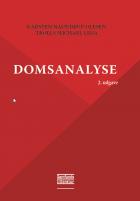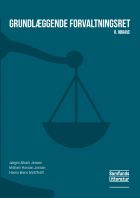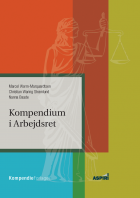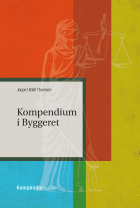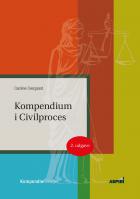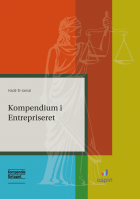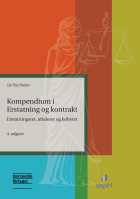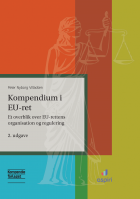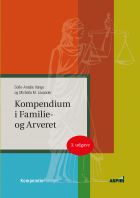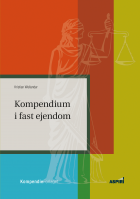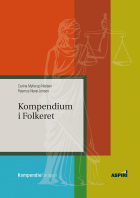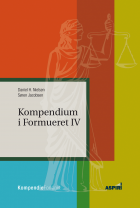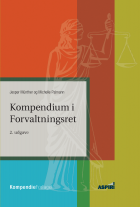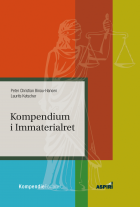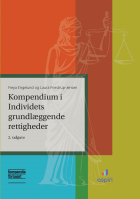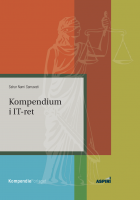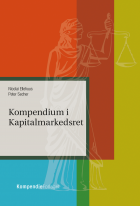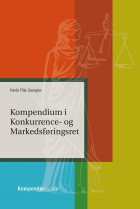Content section

Compendium of International Law
Buy the book
Aditional information
Foreword 9
1 International law as a legal system 11
1.1 Key
aspects 11
1.2 Historical background 11
1.2.1 Key points 11
1.3 Classification of international
law: Coexistence and cooperation 12
1.4 Approaches in national legal
systems: Monism vs. dualism 13
2 Legal sources 15
2.1 Legal
sources in the ICJ Statute 15
2.2 Conventions 15
2.3 Customary international law 15
2.4 Priority regarding conventions and
customary international law 16
2.5 General principles 16
2.6 Court judgements 17
2.7 Academic contributions 17
2.8 Other sources 17
2.9 Priority of the legal sources 17
2.10 Soft law 18
3 Treaty-law 19
3.1 Definition
of a treaty 19
3.2 Competence regarding conclusion of
treaties 19
3.3 Consent as the basis of treaties 20
3.4 Intermediate period 21
3.5 Treaty invalidity 21
3.6 Reservations 22
3.7 Interpreting the treaty 24
3.8 Amendments 24
3.9 Terminating and withdrawing the
treaty 25
4 Actors 27
4.1 Legal
personality 27
4.2 States 27
4.2.1
State recognition 27
4.2.2
The criteria from the Montevideo Convention 28
4.2.3
Principle of self-determination 28
4.2.4
Acquisition of territory 29
4.2.5
Succession 30
4.2.6
Extinction 30
4.3 International organisations 30
4.4 Individuals 30
4.5 Other actors 31
5 State jurisdiction 33
5.1 Types
of jurisdictions 33
5.2 Prescriptive jurisdiction 33
5.2.1
Definition and principles 33
5.2.2
Jurisdiction based on territory 33
5.2.3
Jurisdiction based on the active personality principle 34
5.2.4
Jurisdiction based on the passive personality principle 34
5.2.5
Jurisdiction based on the protective principle 34
5.2.6
Jurisdiction based on the universal principle 35
5.2.7
Conflicting jurisdictions 35
5.3 Enforcement jurisdiction 35
6 Immunity 37
6.1 Immunity
of states 37
6.1.1
Regulation 37
6.1.2
Sovereign vs. commercial acts 37
6.1.3
Enforcement immunity 38
6.2 Immunity of state representatives 39
6.2.1
Personal and functional immunity 39
6.2.2
State representatives with high-ranking status 39
6.2.3
Other state representatives 40
6.3 Immunity of diplomats 40
6.3.1
Diplomats 40
6.3.2
Diplomatic agents 41
6.3.3
Other protection 42
6.3.4
Compliance with host state laws 43
6.3.5
Immunity of consular representation 43
6.3.6
Immunity of special missions 44
7 Responsibility of the state 45
7.1 Elements
of state responsibility 45
7.2 Attributability to the state 45
7.2.1
Acts of states 45
7.2.2
Acts of individuals 46
7.2.3
Acts of insurrectional movements 47
7.2.4
Acts of other states 47
7.3 Justifying non-compliance 47
7.3.1
Special situations in the ARSIWA 47
7.3.2
Interrelation of the ARSIWA article 20-25 with article 26 48
7.3.3
Countermeasures of lawful character 48
7.4 Consequences of international
responsibility 49
7.5 Those entitled to invoke breaches 50
7.5.1
The injured state 50
7.6 Diplomatic protection 50
7.7 Acts of international
organisations 51
8 Law of the sea 53
8.1 Overview
and regulation 53
8.2 Maritime zones 54
8.2.1
Purpose 54
8.2.2
Baselines 54
8.2.3
Internal waters 55
8.2.4
Territorial sea 56
8.2.5
The contiguous zone 57
8.2.6
The exclusive economic zone (EEZ) 58
8.2.7
The continental shelf 58
8.2.8
The Area 59
8.2.9
The high seas 60
8.2.10
Overlapping maritime zones 60
8.3 Universal jurisdiction over piracy
61
8.4 Fishing 61
8.5 Options for dispute resolution 62
9 Dispute settlement 63
9.1 Peaceful
resolution 63
9.2 Non-judicial means 63
9.3 Arbitration 64
9.4 ICJ 65
9.4.1
Functions, access, and consent 65
9.4.2
Provisional measures 66
9.4.3
Court rulings final character 66
9.4.4
Advisory opinions 66
10 Use of force 67
10.1 Jus
ad bellum and jus in bello 67
10.2 Prohibition in the UN Charter 67
10.3 The Security Council 67
10.4 Self-defence 68
10.4.1
Definition 68
10.4.2
Initiation 69
10.4.3
Necessity 69
10.4.4
Proportionality 70
10.4.5
Collective self-defence 70
10.4.6
The Security Council 70
10.5 Debated situations 71
10.5.1
Own nationals 71
10.5.2
Nationals of other states 71
11 Armed conflict (humanitarian law) 73
11.1 Definition
and sources 73
11.2 International, non-international
and transnational armed conflicts 73
11.3 Distinction between combatants
and civilians 74
11.3.1
Combatants 74
11.3.2
Civilians 76
11.4 Principle of distinction 76
11.5 Prohibition on causing
unnecessary suffering 77
11.6 Belligerent occupation 77
11.7 Impact of human rights law 78
12 International criminal law 79
12.1 Definition
and regulation 79
12.2 The International Criminal Court 79
12.3 Crimes 80
12.3.1
Elements 80
12.3.2
Genocide 80
12.3.3
Crimes against humanity 80
12.3.4
War crimes 81
12.3.5
Aggression 81
12.4 Criminal liability 81
12.5 Guarantees in criminal
proceedings 83
Definitions 85
Relevant cases 86
Index of keywords 87
Sidebar section
Pensumeksemplarer ikke til rådighed
Det er ikke muligt at anmode om pensumeksemplarer af denne titel.
Læs mere om vores betingelserHar du spørgsmål?
Du er altid velkommen til at kontakte os på info@samfundslitteratur.dk eller på telefon: 44 22 38 80.
Læs om vores persondatapolitik.
Kontakt fagredaktøren
Har du en idé til en lærebog, eller mangler der en bog inden for dit fag, hører vi gerne fra dig! Skriv til fagredaktør Henrik Schjerning på hs@samfundslitteratur.dk.


